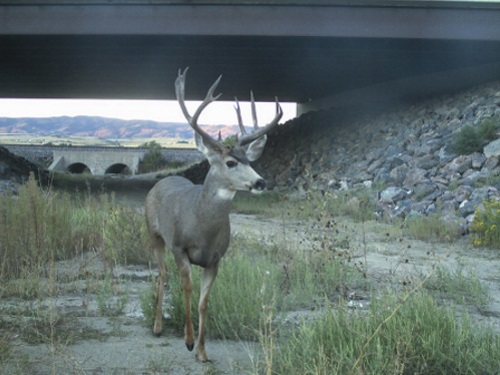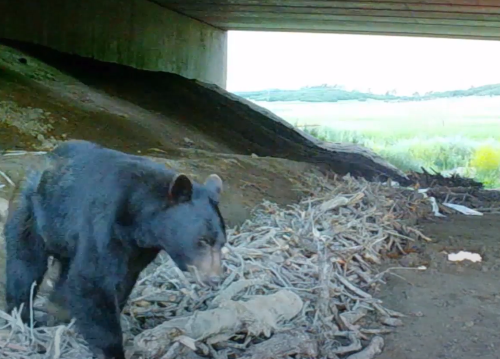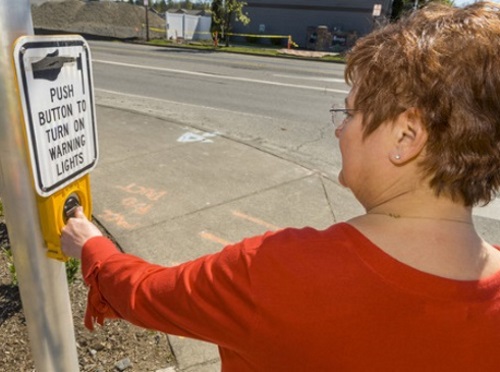FEDERAL ACTION
Senate unanimously redirects COVID relief money for infrastructure projects – WIS-TV
What’s in, and what’s out, as Democrats trim Biden infrastructure bill – AP
White House, EPA tout climate wins and goals ahead of COP 26 – E&E News
Can the Biden Administration Meet Its Offshore Wind Goals? – Maritime Reporter and Engineering News
Billions in environmental justice funds hang in the balance – AP
COVID-19
COVID-19 Pandemic: Observations on the Ongoing Recovery of the Aviation Industry – GAO
INFRASTRUCTURE RESILIENCE AND SUSTAINABILITY
WSDOT Project Keeps Traffic, Fish Moving During Construction – AASHTO Journal
Pa. to Pave Road With Asphalt, Recycled Plastic Mixture – Times Leader
Downtown Brooklyn’s Greener, Car-Free Future Is Taking Root – CityLab
For Uber and Lyft, the Rideshare Bubble Bursts – New York Times (Opinion)
AIR QUALITY
New Software Puts Rail Freight On Express Track To Net-Zero Emissions – US Department of Energy
Fly more, pollute less — the great aviation conundrum – France 24
Study: Charging Up EVs Costs More Than Filling Up Gas Tanks – Detroit Free Press
CDOT issues updated air pollution reduction standard proposal – Colorado Department of Transportation (Media release)
ENVIRONMENTAL JUSTICE
‘Mobility Justice’: How cities are rethinking public transportation after COVID – Grist
NATURAL RESOURCES
Environmental groups say state’s trash reduction plan not strong enough – WBUR Radio
CULTURAL RESOURCES
WSDOT archaeologist solves mystery of structure under Maple Valley Highway – KIRO Radio
Michigan City’s new trail connects the dunes, arts, a wild river and (eventually) Chicago – South Bend Tribune
HEALTH AND HUMAN ENVIRONMENT/ACTIVE TRANSPORTATION
Guide aims to help blind, low-vision pedestrians navigate Montgomery County streets – Radio WTOP
R.I. will not try to stop the South Water Street bike lane project – Boston Globe
Public comment sought on bike plans in Joplin – Joplin Globe
Group seeks to convert old South Dakota railroad line to recreation trail – AP
As e-bikes soar in popularity, a proposed Massachusetts law would clarify how and where they can be used – Boston University Statehouse Program
SCAG Receives Grant for Go Human Safety Program – Southern California Association of Governments (Media release)
TRB RESOURCES/ANNOUNCEMENTS
Confronting a ‘Triple Existential Threat’ – NAM President Victor Dzau Discusses How Health and Medicine Can Respond to Current Crises – National Academy of Medicine
Equitably Connecting Rural and Urban Populations – TRB
FEDERAL REGISTER NOTICES
Re-Designation of the Primary Highway Freight System (PHFS) – FHWA (Notice of extension of comment period)
Notification of Temporary Travel Restrictions Applicable to Land Ports of Entry and Ferries Service Between the United States and Mexico – U.S. Customs and Border Protection (Notification of continuation of temporary travel restrictions)
Notification of Temporary Travel Restrictions Applicable to Land Ports of Entry and Ferries Service Between the United States and Canada – U.S. Customs and Border Protection (Notification of continuation of temporary travel restrictions)
COVID–19 Related Relief Concerning Operations at Chicago O’Hare International Airport, John F. Kennedy International Airport, Los Angeles International Airport, Newark Liberty International Airport, New York LaGuardia Airport, Ronald Reagan Washington National and San Francisco International Airport for the Winter 2021/2022 Scheduling Season – FAA (Extension of limited, conditional waiver of the minimum slot usage requirement for international operations only)
Fire Protection for Recreational Vessels – Coast Guard (Final rule)
Port Access Route Study: Approaches to the Chesapeake Bay, Virginia – Coast Guard (Notice of availability)
Notification of Regional Roundtable Discussions Regarding ‘‘Waters of the United States’’ – Corps of Engineers and EPA (Notice of events; request for nominations)
Proposed Consent Decree, Clean Air Act Citizen Suit – EPA (Notice of proposed consent decree; request for public comment)
Office of Federal High-Performance Green Buildings; Green Building Advisory Committee; Notification of Upcoming Web-Based Meetings – GSA (Notice of public meetings)



